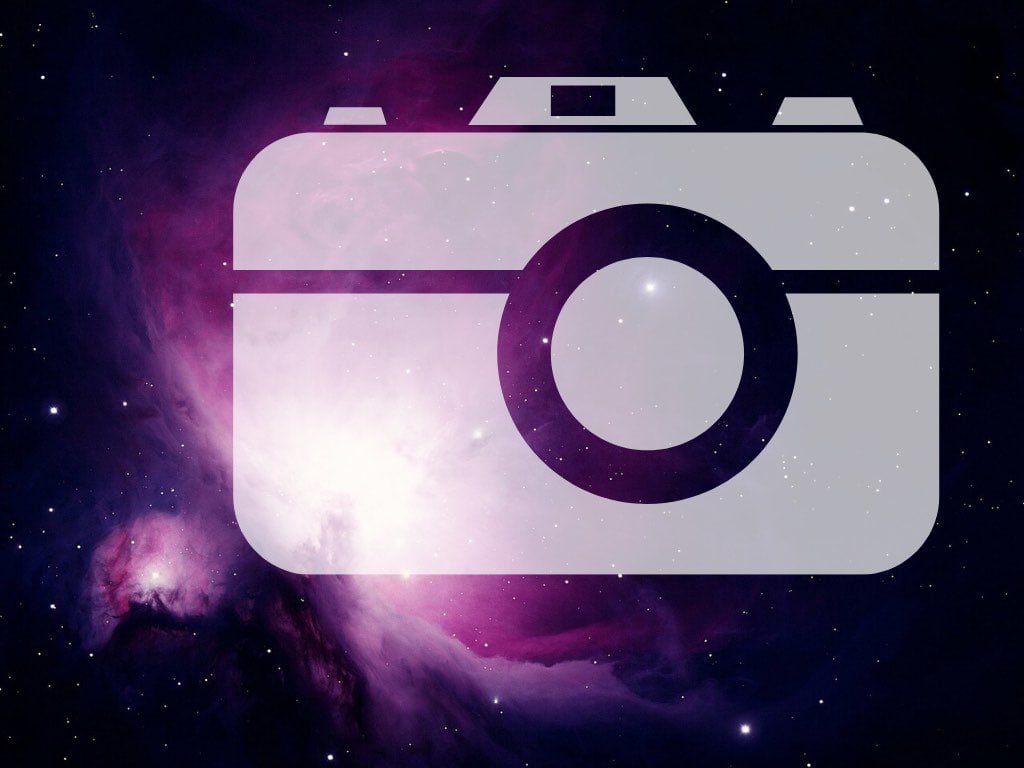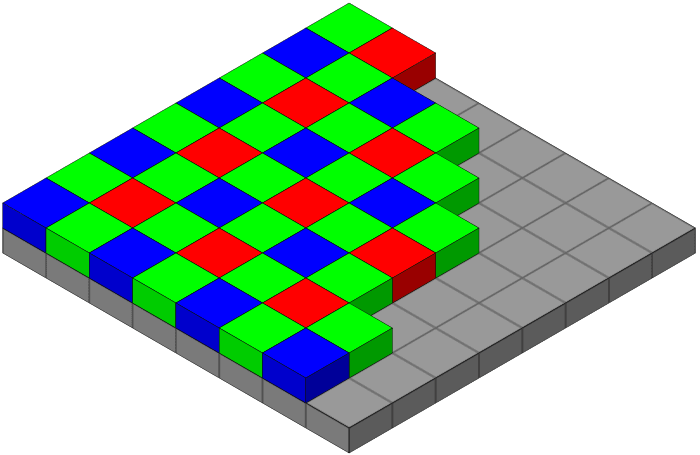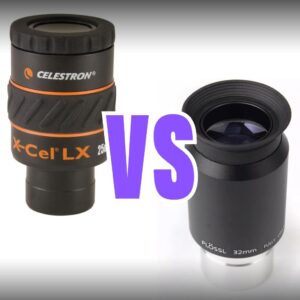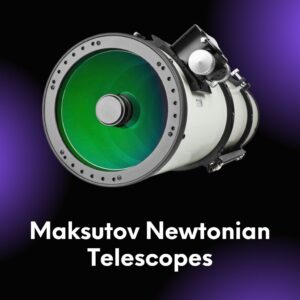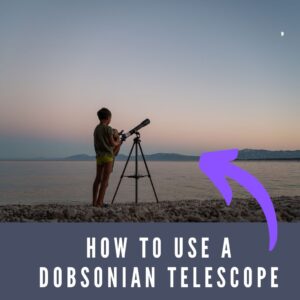This site contains affiliate links to products. I may receive a commission for purchases made through these links.
Choosing the best camera for astrophotography is a challenging task. There are so many factors you have to consider that it can’t be an overnight decision. I remember the first time when I was searching for the best camera for astrophotography, and it was a nightmare. With so many options, it is overwhelming.
So I decided to make your life easier and write the best article I can that includes all the major factors you must consider before buying an astrophotography camera. Read through the whole article because the last part is the most important one.
The best camera for astrophotography is a very subjective matter. If you take one camera that is best for one person, it can be the worst for another. Also, you have to match the right camera with the right telescope because every telescope has different specifications that make the given camera the best match and vice versa.
The astrophotography cameras can be split into two categories based on the image sensor. We have two types of image sensors used in cameras, CMOS and CCD.
CCD Astrophotography Cameras
CCD sensors have been here for a long time. CCD stands for Charged Coupled Device. The technology here is on a high level, and it is the most expensive choice when it comes to astrophotography. Cameras with CCD sensors are science-grade cameras used by astronomers on big telescopes in observatories for science work.
CCD sensors are very sensitive and much better than CMOS sensors at capturing photons because they have a higher quantum efficiency. The CCD sensor picks up almost all light hitting the pixels. The CCD sensor is using 16bit technology, which means a higher dynamic range(HDR) for astrophotography. It results in more details in the final image.
CCD astrophotography cameras are best for deep space imaging, and they are not good on bright objects like planets. They have a very low noise profile, so it is easy to process images taken with a CCD sensor. This is also because they can be cooled to -25 degrees celsius which significantly reduces the sensor noise.
And the last thing you should know about CCD astrophotography cameras is that they are very expensive. It should be your last choice if you are a beginner. As you progress in astrophotography, you will probably end up with a CCD camera, but there is a long way to go and a steep learning curve to reach that stage.
CMOS Astrophotography Cameras
Many devices that you already have at home like webcams, smartphones, or DSLR cameras use CMOS sensors. CMOS stands for Complementary Metal Oxide Semiconductor. CMOS is a newer technology than CCD.
Despite the superiority of CCD over CMOS for astrophotography, the CMOS sensors are getting better and are very close to the CCD sensors at present. CMOS sensors are not so highly quantum efficient at capturing photons and have lower HDR because of 12bit technology.
They also suffer from higher noise, but they are higher resolution, and they are faster with higher FPS, which is great for planetary imaging. But they can be used for deep-space imaging as well.
CMOS cameras are much cheaper than CCD cameras, and maybe you already have one at home that you can use. If you are a beginner in astrophotography, CMOS cameras are the first choice.
And the best starting CMOS camera for beginners in astrophotography is a DSLR camera, so let’s talk about that.
Read also: Can You Take a Picture With Your Phone Through a Telescope?
Best DSLR For Astrophotography

The best DSLR astrophotography camera is obviously the one that you already own. As a matter of fact, any modern DSLR camera is suitable for astrophotography. There are differences, but the DSLR camera is the one I recommend to anyone starting this hobby.
You can use it even if you don’t have a telescope yet with your existing lenses, but you will need some sort of tracking mount like iOptron SkyTracker to do long exposure images.
If you are asking me about a particular model or a brand, I prefer Canon cameras. There are many options, for example, Canon EOS 6D, or if you are on a budget, you can go for the older Canon EOS T3i, which is still amazing for astrophotography.
I am still using an old Canon EOS 1000D/Rebel XS despite having newer and better cameras. I also wrote about it in my older article called Budget Astrophotography Under $600.
DSLR cameras are ideal for starting an astrophotography hobby. They are portable; you can use them for daytime photography too, they have an LCD screen, so you don’t need any additional hardware, and are easy to use.
Modifying a DSLR For Astrophotography
If you don’t plan to use your DSLR for daytime photography and you have decided to do astrophotography only, you can squeeze more performance from the camera by modifying it.
What I mean by that is to remove the stock IR filter blocking most of the precious red light. Most of the deep sky objects like emissions nebulae are in the red spectrum of light. The IR filter in your camera is blocking most of the red spectrum that is needed to capture these objects. This part of the spectrum is called H-alpha.
So, if you are handy and confident to disassemble your camera, you can do it yourself. It is a pretty straightforward process, but it also depends on the camera model. It is really worth it for astrophotography. You can find the removal guide on the internet for almost all camera models.
Also, some companies can do this modification for you if you are not confident to do it yourself, or you have a recently expensive model DSLR. Remember that you can destroy your camera during the process, so decide wisely.
After many sleepless nights under the skies with your modified DSLR camera when you have learned almost everything about astrophotography and image processing, you want to move up to the next level because the DSLR is the limiting factor for you now. The next step in the astrophotography ladder is a dedicated CMOS camera.
Dedicated CMOS Astrophotography Camera
Dedicated CMOS cameras for astrophotography came a long way in recent years. They are a better option than the DSLR and almost as good as dedicated CCD cameras for astrophotography.
You can also use them with lenses, but they are dedicated and made for use with a telescope.
There is a wide range of these cameras on the market now. There are two categories you can choose from. One is for planetary imaging, which can be used as guiding cameras too, and the second one is for deep sky imaging.
Then there are two other options, a color camera sensor, and a black and white mono camera sensor. We will take a closer look at color vs. mono sensors later in this article.
The price range is extensive, starting at $200 up to $6000 and more. The cheaper ones are good for planetary imaging with a small sensor and the expensive ones for deep sky imaging with a bigger sensor(I will talk about sensor size later). The most popular brand for a dedicated CMOS camera is ZWO.
The main advantage of the dedicated CMOS astrophotography camera over the DSLR is that it has passive or active cooling of the sensor. It massively helps to reduce the noise in the image running at -20 degrees celsius. They usually have a higher dynamic range too.
They are fast and excellent for planetary imaging, where you need high resolution and high FPS.
The best dedicated CMOS camera for astrophotography in the DSLR price range is ZWO ASI294MC one-shot color camera.

The disadvantage of the dedicated CMOS camera for astrophotography excluding the steep learning curve with a new type of camera is that you will have more cables running around your imaging rig.
You will need more accessories, and because it has no screen at the back, it has to be connected to a computer with capturing software, or you have to use a device like ZWO ASiair Pro Wireless Astrophotography Controller.
Dedicated CCD Camera For Astrophotography

The typical owner of a dedicated CCD astrophotography camera is an amateur astronomer with a backyard observatory, 5 telescopes, 4 DSLRs, and 3 CMOS cameras,…just kidding 🙂 I own two CCD cameras, and I don’t have all of this!
My point is that you have to be a hardcore astrophotography enthusiast or astronomer to consider buying a dedicated CCD camera for astrophotography. As I said before, CCD chips are used mostly for scientific work and are very expensive. But, I’m not discouraging you from buying one, except if you are a beginner.
CCD cameras are also popularly used in video astronomy or, in recent terms, electronically assisted astronomy (EAA). I use my CCDs only for EAA. They are older with low-resolution Sony 1/2″ Ex-view HAD CCD sensor.
Dedicated CCD cameras will give you professional-level imaging, but they are expensive and bulkier compared to CMOS cameras. They also draw more power, and you will need a proper telescope to pair it with.
The most popular brands are ATIK and QHYCCD. The ATIK brand is more expensive. They offer a lot of options from entry-level to a large format camera.
Color Camera vs. Black And White Monochrome Camera For Astrophotography
Now, you have some understanding of the difference between CMOS and CCD cameras. But what about the difference between a color camera and a monochrome camera? The first instincts tell you that you want a color camera because you want to produce color images. But hold on and let me explain the difference.
Every camera chip is basically black and white or also called monochrome. The pixels can’t differentiate between colors, and we are not able to manufacture such a sensor now. But the color image is created from RGB, red, green, and blue. The pixel on the chip doesn’t care if the light is blue or red, and it read values only from black to a little bit more white.
To get a color image, the sensor needs to have a layer of RGB filters over each pixel to create a color image. The filter mosaic is called the Bayer matrix, and it is in every color camera chip. It causes a little problem for astrophotography.
The Bayer matrix has more green filters in the mosaic than it has blue and red. And we don’t like green in astrophotography because there is not so much green light in space. So it is recording less red and blue light.
You can still make great images with a color camera. Still, the monochrome camera is more efficient, and you will get more details in your picture with a monochrome camera because the whole spectrum of light is hitting the pixels equally.
Creating a color picture with a monochrome camera takes more work and time because you have to shoot the target with filters in your telescope for each red, green, and blue light using a filter wheel mounted between the camera and telescope.
You will make a better image this way, and if you replace RGB filters with narrowband filters like H-alpha, Sulfur-II, and Oxygen III, you can produce images in colors of the Hubble Telescope called Hubble Palette. So if you can afford it, then go for a monochrome camera, it is worth it.
A monochrome camera with narrowband filters is also the way to go if you are going to do astrophotography in a city or highly light-polluted area.
Sensor Size And Field Of View In Astrophotography
The next important and maybe the most important specification of the astrophotography camera is the sensor size. The sensor size with a combination of telescope focal ratio will give you the field of view of your images.
The rule of thumb is that a small sensor size has a narrow field of view, and a bigger sensor has a more full field of view. Because of that, you will be using small sensors for planetary imaging and big sensors for deep sky imaging like nebulae.
You also have to take into account the focal ratio of your telescope to calculate the final field of view. Most resellers have a handy calculator of the FOW under each camera where you put your telescope’s specifications and show you the FOV on the popular objects for each camera. Or you can use this online calculator to get the FOV(choose Imaging Mode).
So pay significant attention to that before buying any camera for your telescope.
Optimum Pixel Size For Astrophotography
Another rule that is good to follow is the ideal resolution for astrophotography, which is determined by pixel size and the focal ratio of the telescope. You can have the best and most expensive camera in the world, but if you don’t follow this rule, your camera will not get the best results when using the wrong telescope or vice versa.
You always have to match the right telescope with the right pixel size of the camera sensor.
To calculate the ideal resolution for your setup, you need to know the focal length of the telescope and the pixel size in a micron square.
Then you can use the following equation:
(Pixel Size (μm) of camera / Focal length of the telescope in mm)*206.265 = angular resolution (arcseconds/pixel)
The ideal resolution or image scale is measured in arcseconds per pixel, and the ideal value is between 1 and 2 arcseconds per pixel.
So let’s try it on an example. You have a telescope with a focal length of 650mm, and the pixel size of the camera you want to buy is 4.5μm:
(4.5 / 650) * 206.265 = 1.43 arcseconds/pixel
As you can see, in this example, we are in the ideal range of 1-2 arcseconds/pixel, and our image sampling will be ok with this camera.
But what does that mean, and what happens when we have oversampling or undersampling? Let’s talk about that.
Oversampling vs Undersampling
Oversampling happens when the value of arcseconds/pixel is less than 1, and undersampling occurs when the value of arcseconds/pixel is more than 2.
If you are out of the ideal range and there is no way around it, it is better to oversample your image rather than undersample.
Oversampling is common for telescopes with longer focal lengths. You can fix it by using a focal reducer to reduce the focal length of the telescope or by binning in the astrophotography software. Undersampling is common with shorter focal lengths, and the only solution to fix it is by buying a camera with smaller pixels.
Oversampling:
- bloated stars
- lower signal-to-noise ratio(SNR)
- needs longer exposure time(this is increasing noise)
- better resolution but only if the conditions are perfect (guiding, dark skies, weather…)
Undersampling:
- square or blocky stars
- higher signal-to-noise ratio(SNR)
- needs less exposure time(lower noise)
- low resolution
If you follow this rule, try to stay in the ideal resolution range and match the camera to your telescope before buying one, it will give you better results and less headache after.
Conclusion
I hope you are not confused by all of this if you are a beginner and want to jump into the astrophotography hobby. To sum it up, my recommendation is to start with the DSLR camera for beginners. You will learn a lot about image processing and astrophotography in general.
Then, if it hooks you up, you can start looking for dedicated CMOS or CCD camera for astrophotography. Until then, just learn and experiment with DSLR because astrophotography has a steep learning curve, and it can get pretty expensive when you fully dive in. Clear skies!
Read also:

